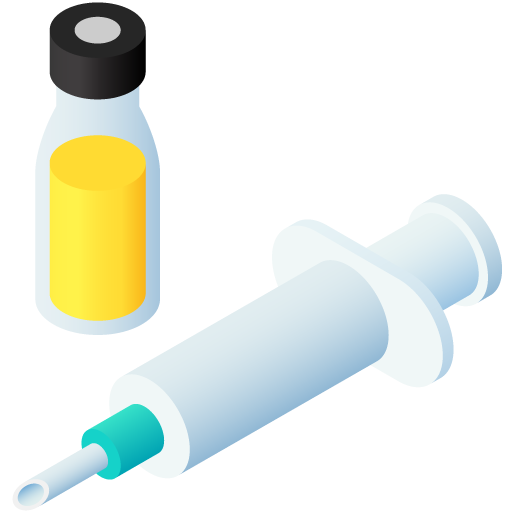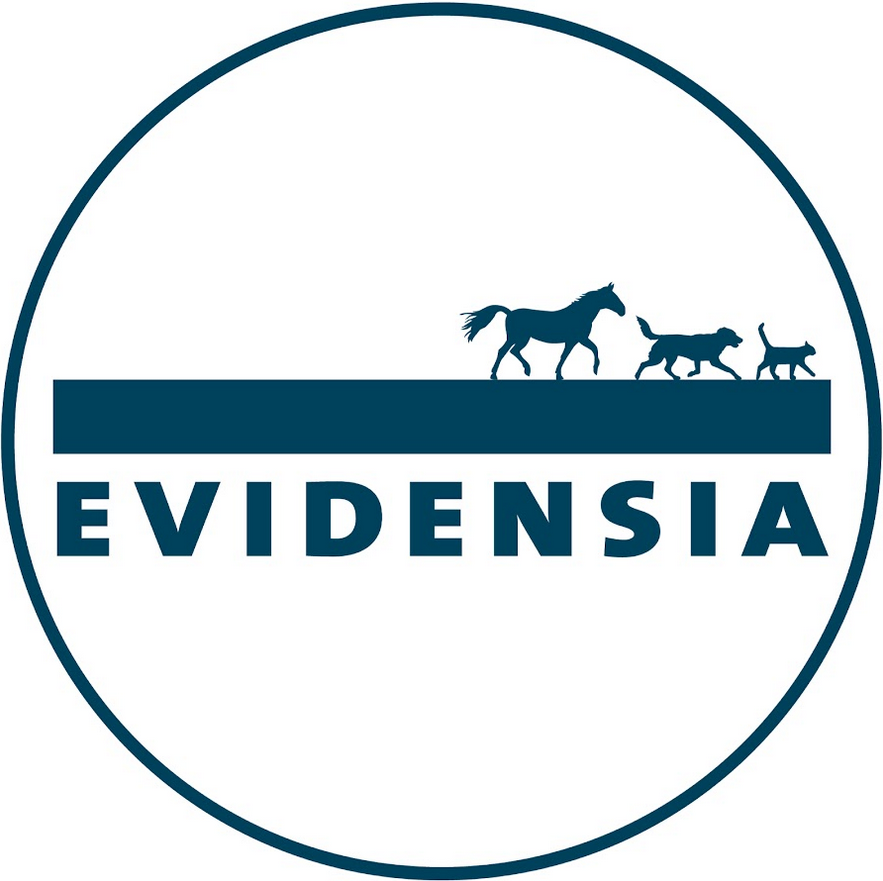Combination therapy
No results were found for your selected species
Bovilis Bovipast RSP
Active substance
ATC code
Species
Cattle.
Indications
For the active immunisation of cattle against:
- Parainfluenza-3 virus, to reduce infection,
- Bovine Respiratory Syncytial virus, to reduce infection and clinical signs,
- Mannheimia haemolytica serotype A1, to reduce infection, mortality, clinical signs, lung lesions and bacterial invasion of the lung caused by serotypes A1 and A6.
Cross-reactive immunity to the A6 serotype of Mannheimia haemolytica has been demonstrated in a challenge experiment under laboratory conditions after primary course of vaccination.
Approximately two weeks after completion of the basic immunisation programme, the humoral immune response against Bovine Respiratory Syncytial virus and Parainfluenza-3 virus is at its highest level. The duration of protective immunity has not been established in challenge experiments.
Onset of immunity: 2 weeks.
Duration of immunity: has not been established.
Dose to be administered and administration route
Method of administration:
Subcutaneous use. Injection into the side of the neck.
Dose: 5 ml.
Basic immunisation:
Animals from approximately 2 weeks of age should receive two vaccinations separated by an interval of approximately 4 weeks.
Booster doses:
If booster doses are required, a single dose should be given approximately 2 weeks before each risk period (e.g. transport, introduction into a herd, change of housing).
The vaccine must be shaken well before use.
For vaccine administration, needles of 1.5 to 2.0 mm diameter and 10 to 18 mm long are recommended. The vaccine should be brought to room temperature prior to use and injected quickly.
Adverse reactions
Cattle:
|
Common (1 to 10 animals / 100 animals treated): |
Injection site swelling1. Elevated temperature2, reluctant to move. |
|
Very rare (<1 animal / 10,000 animals treated, including isolated reports): |
Hypersensitivity reaction3. |
1 In extreme cases narrow swellings up to 10 cm long. Typically, these swellings completely disappear or reduce in size to a negligible small lump within 2 to 3 weeks after vaccination, though in individual animals very small reactions can be found for up to 3 months.
2 Slight and lasting a maximum of 3 days after vaccination.
3 May be fatal.
Reporting adverse events is important. It allows continuous safety monitoring of a veterinary medicinal product. Reports should be sent, preferably via a veterinarian, to either the marketing authorisation holder or its local representative or the national competent authority via the national reporting system. See the package leaflet for respective contact details.
Dispensing
POM-V - Prescription Only Medicine – VeterinarianSUMMARY OF PRODUCT CHARACTERISTICS
1. NAME OF THE VETERINARY MEDICINAL PRODUCT
Bovilis Bovipast RSP, suspension for injection for cattle.
2. QUALITATIVE AND QUANTITATIVE COMPOSITION
Each dose (5 ml) contains:
Active substances:
Inactivated Bovine Respiratory Syncytial virus, strain EV908 105.5 – 106.4 TCID50*
Inactivated Parainfluenza-3Virus, strain SF-4 Reisinger 107.3 – 108.3 TCID50* Inactivated Mannheimia haemolytica A1, strain M4/1 9 x 109 cells
* Antigen concentration that induces antibody levels in rabbits not significantly lower than that of a standard preparation; TCID50 = tissue culture infective dose 50% Adjuvants:
|
Aluminium hydroxide |
37.5 mg |
|
Quil A (Saponin) Excipients: |
0.625 mg |
|
Thiomersal |
0.032 – 0.058 mg |
For the full list of excipients, see section 6.1.
3. PHARMACEUTICAL FORM
Suspension for injection.
The product is pale yellow to red-pink with whitish sediment. By shaking the sediment is easily suspended to an opaque, whitish to red/pink suspension.
4. CLINICAL PARTICULARS
4.1 Target species
Cattle.
4.2 Indications for use, specifying the target species
For the active immunisation of cattle against:
- Parainfluenza-3 virus, to reduce infection,
- Bovine Respiratory Syncytial virus, to reduce infection and clinical signs,
- Mannheimia haemolytica serotype A1, to reduce infection, mortality, clinical signs, lung lesions and bacterial invasion of the lung caused by serotypes A1 and A6.
Cross-reactive immunity to the A6 serotype of Mannheimia haemolytica has been demonstrated in a challenge experiment under laboratory conditions after primary course of vaccination.
Approximately two weeks after completion of the basic immunisation programme, the humoral immune response against Bovine Respiratory Syncytial virus and Parainfluenza-3 virus is at its highest level. The duration of protective immunity has not been established in challenge experiments.
Onset of immunity: 2 weeks.
Duration of immunity: not established.
4.3 Contraindications
Do not vaccinate animals that have intercurrent disease, heavy parasitic infestation or are in poor general condition, since a satisfactory immune response will only be obtained in healthy and immuno-competent animals.
4.4 Special warnings for each target species Vaccinate healthy animals only.
4.5 Special precautions for use
Special precautions for use in animals
The basic immunisation should be started in time, so that immunity has fully developed by the beginning of the period of risk. The basic immunisation of calves should be completed prior to housing or should be performed in the housing unit under quarantine.
It is advisable to vaccinate all animals in a herd in order to minimise the infectious potential unless there is a contraindication. Failure to vaccinate individual animals may promote the transmission of pathogens and development of disease.
The magnitude of the antibody response may be reduced by maternally derived antibodies in calves up to six weeks of age. However, according to the results of challenge experiments, significant protection against infection by Bovine Respiratory Syncytial virus is still provided three weeks after the basic vaccination course, and significant protection against Parainfluenza-3 virus and Mannheimia haemolytica serotype A1 is still provided six weeks after the basic vaccination course. The results of challenge experiments in calves with maternally derived antibodies further indicate that the onset of cross-protective immunity to the A6 serotype is 2 weeks after completion of the vaccination course. Cross protective immunity is provided up to six weeks after the basic vaccination course as demonstrated by serological tests.
Respiratory infections in calves are often associated with poor hygiene. Thus, general improvements in hygiene are important to support the effect of vaccination.
Special precautions to be taken by the person administering the veterinary medicinal product to animals
In case of accidental self-injection seek medical advice immediately and show the package leaflet or the label to the physician.
4.6 Adverse reactions (frequency and seriousness)
In laboratory and field trials:
Immunisation may commonly result in temporary swellings at the injection site (in extreme cases narrow swellings up to 10 cm long may occur). Typically, these swellings completely disappear or reduce in size to a negligible small lump within 2 to 3 weeks after vaccination, though in individual animals very small reactions can be found for up to 3 months. Additionally, a transient slight rise in body temperature, lasting a maximum of 3 days, may commonly occur after vaccination and at the same time a slight reluctance to move may be found.
In post marketing experience:
In very rare cases hypersensitivity reactions, which may be fatal, can occur.
The frequency of adverse reactions is defined using the following convention:
- very common (more than 1 in 10 animals treated displaying adverse reaction(s))
- common (more than 1 but less than 10 animals in 100 animals treated)
- uncommon (more than 1 but less than 10 animals in 1,000 animals treated)
- rare (more than 1 but less than 10 animals in 10,000 animals treated)
- very rare (less than 1 animal in 10,000 animals treated, including isolated reports).
4.7 Use during pregnancy, lactation or lay Can be used during pregnancy and lactation.
4.8 Interaction with other medicinal products and other forms of interaction
Safety and efficacy data are available which demonstrate that this vaccine can be administered on the same day but not mixed with MSD Animal Health’s live IBR marker vaccine (where this product is authorised) in cattle from 3 weeks of age onwards.
No information is available on the safety and efficacy of this vaccine when used with any other veterinary medicinal product except the product mentioned above. A decision to use this vaccine before or after any other veterinary medicinal product therefore needs to be made on a case by case basis.
Immunosuppressive drugs should generally not be used directly before or after vaccination, since a satisfactory immune response will only be obtained in immunocompetent animals.
4.9 Amounts to be administered and administration route
Dose: 5 ml
Method of administration:
Subcutaneous use. Injection into the side of the neck.
Basic immunisation:
Animals from approximately 2 weeks of age should receive two vaccinations separated by an interval of approximately 4 weeks.
Booster doses:
If booster doses are required, a single dose should be given approximately 2 weeks before each risk period (e.g. transport, introduction into a herd, change of housing).
The vaccine must be shaken well before use.
For vaccine administration, needles of 1.5 to 2.0 mm diameter and 10 to 18 mm long are recommended. The vaccine should be brought to room temperature prior to use and injected quickly.
4.10 Overdose (symptoms, emergency procedures, antidotes), if necessary
Accidental overdosage is unlikely to cause any reaction other than described in section 4.6, however the swelling may be larger and temperature rise may be higher.
4.11 Withdrawal period(s) Zero days.
5. IMMUNOLOGICAL PROPERTIES
Pharmacotherapeutic group: Immunologicals for Bovidae, Inactivated viral and bacterial vaccines.
ATC-vet code: QI02AL04
The vaccine contains as active ingredients inactivated Bovine Respiratory Syncytial virus (strain EV 908) and Parainfluenza-3 virus (strain SF-4 Reisinger) as well as inactivated Mannheimia haemolytica bacteria (serotype A1) propagated under conditions of iron restriction. Aluminium hydroxide and Quil A are included as adjuvants. Thiomersal serves as preservative.
The vaccine induces antibodies against Bovine Respiratory Syncytial virus, Parainfluenza-3 virus and Mannheimia haemolytica.
6. PHARMACEUTICAL PARTICULARS
6.1 List of excipients
Thiomersal
Simethicone
Formaldehyde
6.2 Major incompatibilities
In the absence of compatibility studies, this veterinary medicinal product must not be mixed with other veterinary medicinal products.
6.3 Shelf life
Shelf-life of the veterinary medicinal product as packaged for sale: 28 months.
Shelf life after first opening the immediate packaging: 10 hours.
6.4 Special precautions for storage
Store in a refrigerator (2°C - 8°C).
Protect from frost. Protect from light.
6.5 Nature and composition of immediate packaging
50 ml bottles of type I glass (10 doses), Ph Eur, closed with injection stoppers type I rubber, Ph Eur, sealed with an aluminium crimp cap.
6.6 Special precautions for the disposal of unused veterinary medicinal product or waste materials derived from the use of such products
Any unused veterinary medicinal product or waste material derived from such veterinary medicinal product should be disposed of in accordance with local requirements.
7. MARKETING AUTHORISATION HOLDER
MSD Animal Health UK Limited
Walton Manor
Walton
Milton Keynes
Buckinghamshire
MK7 7AJ
8. MARKETING AUTHORISATION NUMBER
Vm 01708/4458
9. DATE OF FIRST AUTHORISATION
25 June 1999
10. DATE OF REVISION OF THE TEXT
August 2020 
Approved: 14 August 2020
 TRUSTED SOURCE
TRUSTED SOURCE









